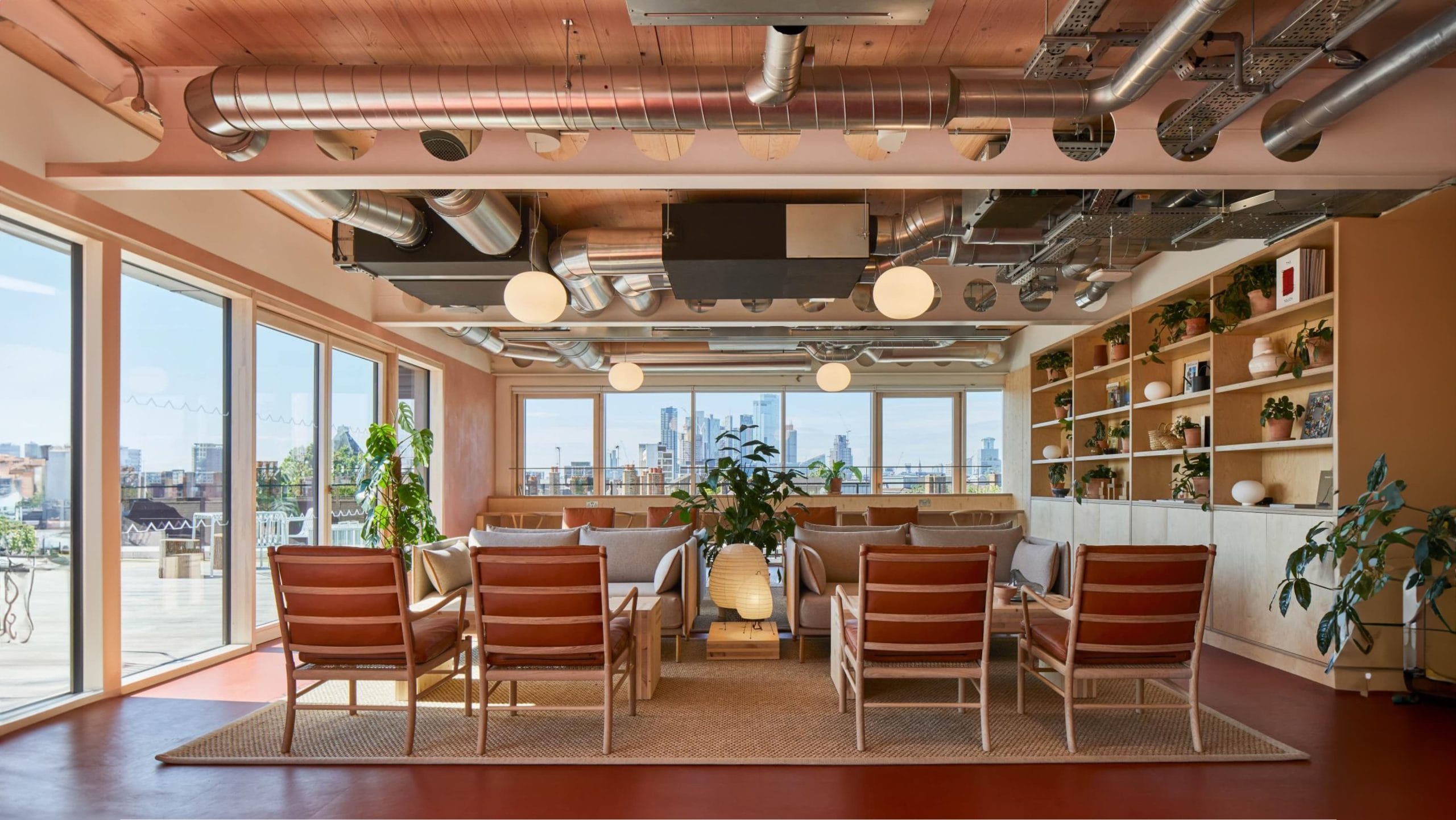

Interview with Ben Southgate, Senior Engineer, Sandy Brown Associates
Noise plays a fundamental role in workplace productivity and we can all relate to the experience of trying to work in an office that is too loud or too quiet. However, noise levels aren’t a ‘one size fits all’ consideration: some people prefer the lively chatter of a coffee shop, while others prefer library-like silence, and yet others prefer different environments depending on their mood or what they’re working on. That’s why offices need a variety of open and private areas designed to cater for different tasks with varying sound levels.
It was with this very much in mind that Sandy Brown set out the acoustic design for Storey’s new building at 6 Orsman Road in Haggerston, which offers areas to cater for different sound level preferences. Here are just three of the reasons that noise is so important.
Productivity
Interface, in collaboration with Radius Global Market Research, surveyed more than 2,000 workers in the U.S., U.K. and Australia to determine the relationship between sound and productivity. The results revealed that noise negatively impacts a significant majority (69%) of global employees’ productivity – as well as concentration levels and creativity. Other studies have found that workers can be up to 66% less productive when exposed to just one nearby conversation.
When our attention is knocked off-centre by noises, it takes effort to return it to the task at hand. Doing so repeatedly, all day long, gradually saps away our focus. That is why Sandy Brown worked to design the private office spaces at 6 Orsman Road with the perfect noise levels to minimise distractions by keeping the sound level as consistent as possible.
Stress
Our brains have an innate response to loud sounds. Scientists have also discovered that excessive noise levels can raise blood pressure and trigger the release of stress hormones, with studies even linking the ringing of a phone and rhythm of a conversation to our heartrate.
How can we design to minimise stress-provoking sounds? One measure is to offer a variety of spaces which cater to different types of work so that workers can self-select the ideal environment for their needs. At 6 Orsman Road, Sandy Brown developed acoustic guidelines for the office to ensure that there were a range of workspaces where productivity would not be impacted by bustle and noise, whilst other areas within the building were created for noisier and more collaborative work, such as the lounge and the café, ensuring that activities at different noise levels could happen in different spaces.
Conversations
There is plenty of research that shows that the most distracting sound of all is other people’s conversations. The issue isn’t eavesdropping; we literally cannot stop our brains from trying to process conversations that we hear! According to Interface research, the two most distracting sounds are conversations among colleagues, which disrupt 71% of employees, and telephone conversations at 67%.
Acoustics are particularly important in meeting rooms, which are specifically designed for speaking. They must have privacy from the outside while ensuring perfect clarity for people involved in the conversation. Sandy Brown designed the meeting rooms on 6 Orsman Road’s fifth floor to minimise noise transfer by using sliding walls to control sound on both sides.